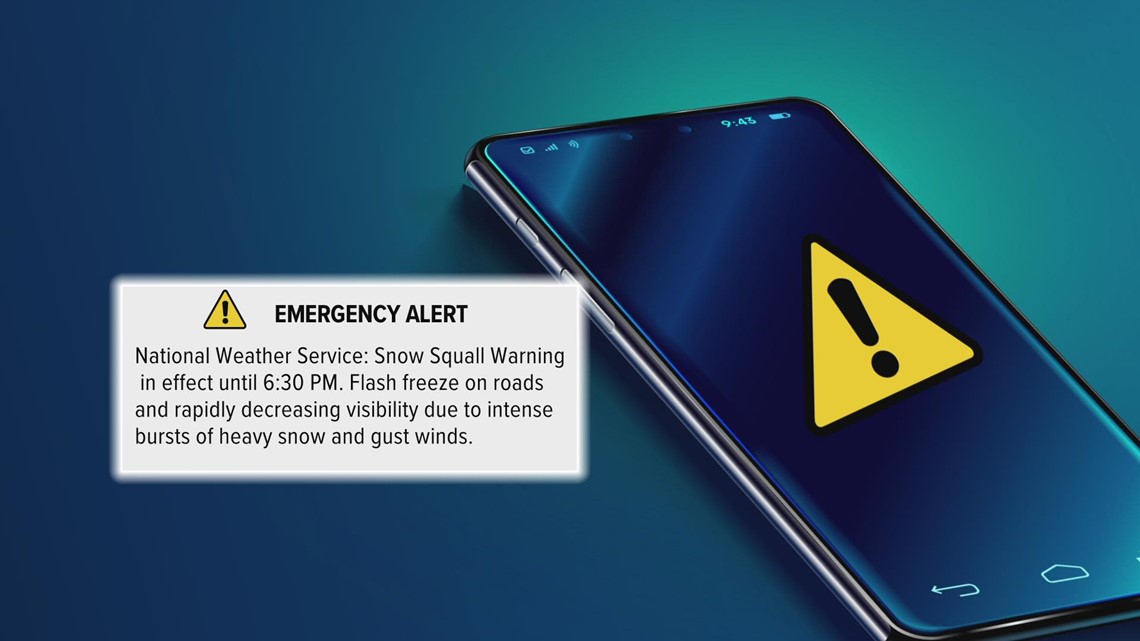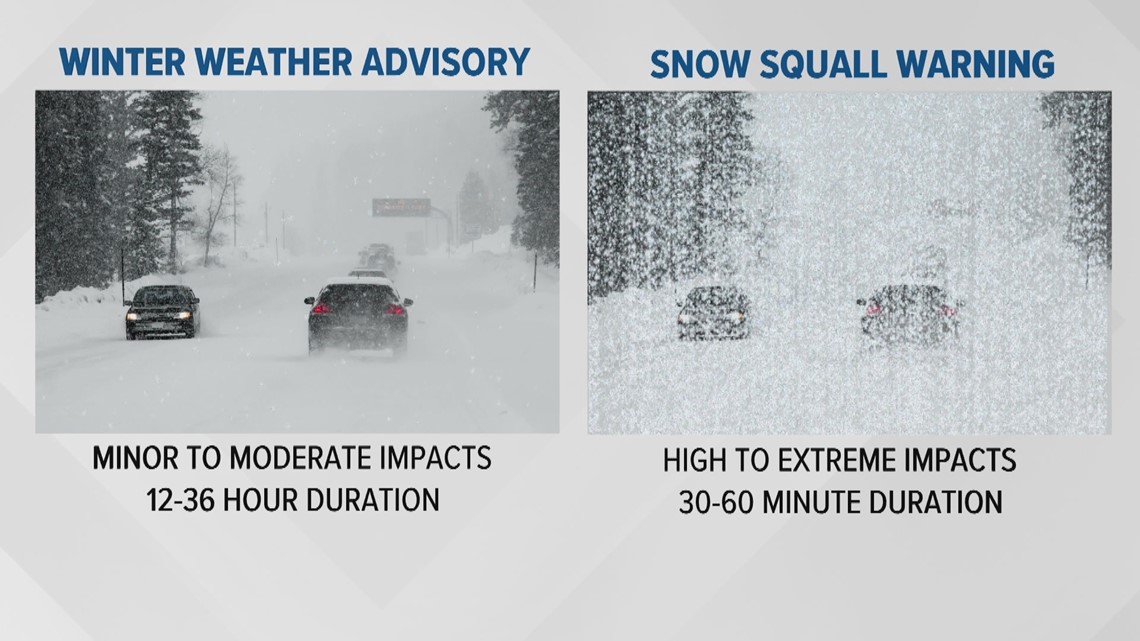BOULDER, Colo. — The National Weather Service (NWS) can send warnings directly to your cell phone by using the Wireless Emergency Alert (WEA) system.
They do that for flash floods, destructive severe thunderstorms, tornadoes, and snow squalls.
But they are changing the snow squall warnings to only trigger a cell phone alert when it's considered to be "significant."
"Mostly that has to do with the timing and location of the snow squall," said Greg Heavener, the Warning Coordination Meteorologist at NWS Boulder. "If a squall is headed towards a major roadway during the hours of 6 a.m. to 10 p.m., there's a good chance our meteorologists will add a 'significant' tag to the warning and a wireless emergency alert will get sent out."
A snow squall is a sudden and intense burst of snow that can last 30 to 60 minutes.
They can come from a band of heavier snow that develops during a storm that's already producing light snow. Or it can come as an independent band that moves into an area that wasn't previously experiencing snow.
Heavener said some snow squalls are deserving of a WEA notification because of how fast they can reduce visibility to zero and ice over the roads.
"I liken it to actually driving with a pillowcase over your head," he said. "I mean it can literally be zero visibility where you can’t see the hood of your car just a few feet in front of your face. That’s how significant these snow squalls can be."


Heavener said this is the fourth winter that NWS has been issuing snow squall warnings for those dangerous bursts of snow.
For the first three years, all snow squall warnings triggered a WEA notification, but public feedback on this relatively new product told them they were issuing too many snow squall warnings, especially in the overnight hours when there weren't too many people on the roads.
So now, only those snow squalls that are considered to have "significant" impacts will get sent out through cell phone carriers.
Heavener said that should give people more confidence that the warnings are serious.
"I don’t like to sit on information if I know that it could potentially impact someone’s life, or decision that they have to make," he said. "Or help them make a decision versus actually telling them what to do."
Between the four NWS offices that issue warnings in Colorado, 14 snow squall warnings were issued last week. Seven on Tuesday and seven on Friday — none of those warnings carried the significant tag that would trigger a WEA notification.
Another caveat to snow squall warnings is that they don't get issued when there is already a winter storm warning or a blizzard warning already in place. The wording in those warnings already implies the dangers of zero visibility and flash freezes on the roadways.
Snow squall warnings only get issued when they develop during winter weather advisory or if there are no other winter alerts in place.
And snow squall warnings will not get issued if a Winter Storm warning or a Blizzard warning is already in place for the area, because those warnings already carry urgency in their wording.


If you do want to get all snow squall warning notifications to get sent to your cell phone, even the ones that don't trigger a WEA, you will have to download a weather specialty app like Weather Underground, the Weather Channel or MyRadar.
You can also find all the alerts, advisories, and warnings issued by the National Weather Service on their website.
SUGGESTED VIDEOS: Snow in Colorado
MORE WAYS TO GET 9NEWS
Subscribe to our daily 9NEWSLETTER
Download the 9NEWS APP
iTunes: http://on9news.tv/itunes
Google Play: http://on9news.tv/1lWnC5n
ADD THE 9NEWS+ APP TO YOUR STREAMING DEVICE
ROKU: add the channel from the ROKU store or by searching for KUSA.
For both Apple TV and Fire TV, search for "9news" to find the free app to add to your account. Another option for Fire TV is to have the app delivered directly to your Fire TV through Amazon.

